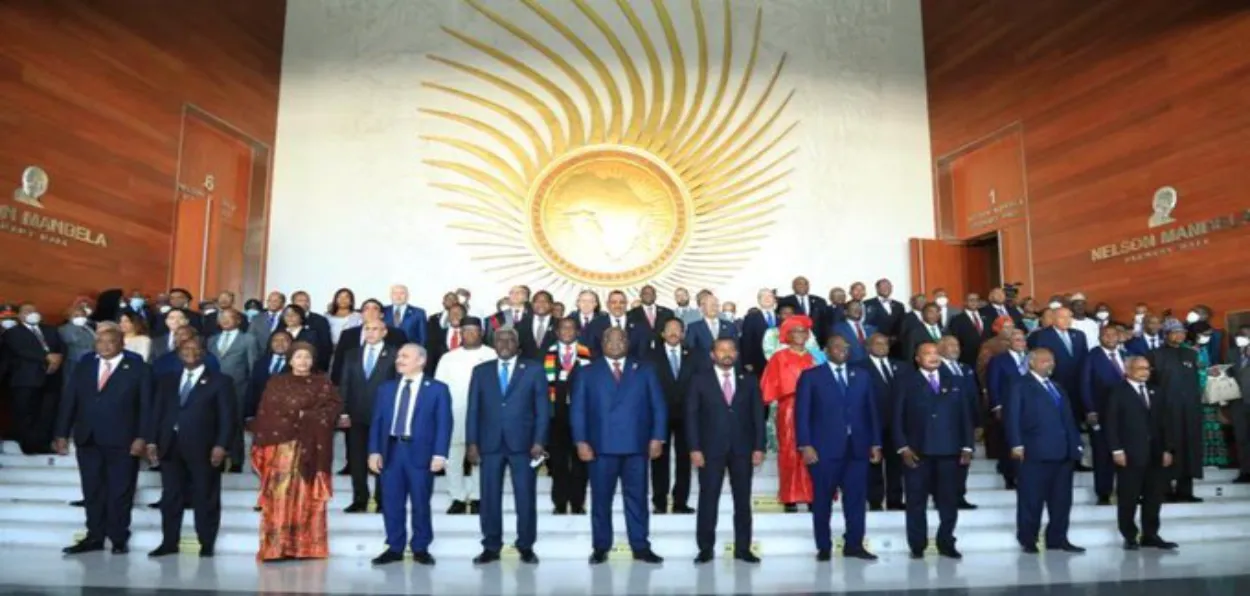
 Sushma Ramachandran
Sushma Ramachandran
The past year in this country has been dominated by conversations about the progress of work being carried out by the G20 under the presidency of India. The fact that being the rotational head of this powerful global group has been turned into a celebration of India’s soft cultural power and hard economic clout has been a source of amazement to the world. Other countries like the U.S. are reported to be regretting their inability to have done so during their turn as G20 presidents.
It cannot be stressed enough, however, that India has taken charge of the G20 presidency at one of the most difficult times for the world since the group was created in 1999. As is often pointed out, it comprises 19 countries and the European Union, accounts for 85 percent of global GDP, 75 percent of global trade, and about two-thirds of the world’s population.
Its primary purpose was originally to improve global economic and financial cooperation and decision–making. The group came together initially in the wake of the Asian financial crisis. It was recognized that global economic upheavals could no longer be resolved by the cosy Group of Seven comprising only the developed world. Powerful developing countries also had to be brought into the discussions, if the world economy was to be kept on an even keel.
Despite these avowed aims, the thrust of the G20 initiatives has now become complicated with political elements dominating the arena in recent years. The Ukraine war has made it difficult to reach a consensus on most issues due to Western opposition to Russia’s role. Even so, India has used deft diplomacy to ensure that a final New Delhi Declaration has been issued with all members coming on board. It is a tribute to the mediating role that this country has assumed about the conflict that Western countries as well as Russia and China were ultimately prepared to accept a compromise on the language used in this regard.
The declaration calls for a “comprehensive, just and lasting peace in Ukraine”. It also stresses that “all states must refrain from the threat or use of force to seize territories”. The declaration goes on to emphasise that the “use or threat of using nuclear weapons is inadmissible”. Backroom negotiations as well as Prime Minister Modi’s persuasion with key heads of state were apparently responsible for the compromise which ensured that Russia was not mentioned specifically in the document.
The success of the summit in terms of arriving at a consensus in difficult times as well as the celebratory nature of the year-long presidency has put the spotlight on India this year. The timing was auspicious as this country has recently become not just the fifth-largest economy but also the fastest-growing one. Current estimates peg growth at over six percent in 2023-24, making it more resilient than most others in the face of persistent external headwinds.
The presidency has equally enabled the world to see the strides achieved by India in the digital economy. It is probably here that discussions have been most enlightening for other G20 members. The data is undeniable. As much as 46 percent of all international digital payments made in 2022 have been carried out in this country with 89.5 million transactions. Brazil is a distant second with 29.2 million transactions and China is third with 17.6 million transactions. It is against this backdrop that the success of the India Stack in this country can be gauged by G20 members. Several developed and developing economies have evinced interest in emulating the digital model formulated here for implementation in their own countries. The key elements of the stack are digital identity through Aadhar, as well as the unified payments interface (UPI) which enables even those without bank accounts to receive funds through digital wallets.
Within the country, trade, and industry have been looking towards the year-long series of G20 meetings to galvanise interest in investing in this country as well as support the global expansion of Indian firms. The expectation is that the focus on the economy here will add an impetus to the China Plus One policy being advocated by many multinationals.
The policy envisages that corporates already having projects in China make additional investments in other regions to leverage the risks of remaining wholly involved there. The rationale is fears concerning simmering tensions with the U.S. and the possibility of an all-out conflict over Taiwan. Big Tech like Apple has already begun a slow shift to India, altering its previous policy of keeping production facilities entirely within China. The G20 dialogues are expected to further highlight this country’s advantages as a haven with attractive policies like the production–linked incentive (PLI) schemes for new investors.
Apart from more trade and investment opportunities, there is a feeling it could translate into better terms in trade agreements now being concluded with several countries. With India now placed at the global high table of economic policymaking, it is likely to find traversing such negotiations easier. The discussions on climate change are also expected to help Indian firms to highlight their achievements in the area of renewable energy. The transition to clean energy and the move away from fossil fuels has also culminated in path breaking commitments in the New Delhi Declaration including the creation of a Global Biofuel Alliance. This could conceivably bring larger countries with technology and capital to work with India in these sunrise sectors, especially given that the country has set ambitious targets for green energy.
ALSO READ: 'Sabka Saath, Sabka Vikas’ can be mantra to address global trust deficit: PM Modi at G20
At the outset, one had commented on the fact that India’s G20 presidency has come at probably the most difficult time for the world since its inception. Yet it probably could not have come at a better time for this country. Despite the adverse external environment created by the pandemic and the Ukraine war, it has demonstrated its resilience by growing faster than any other major economy. The drive to develop infrastructure has gained pace recently, while policies are now being evolved to make it easier to expand the manufacturing sector. Simultaneously the digital economy is broadening rapidly. These elements have been showcased during the G20 Presidency. The summit has also ended with a final declaration adopted by consensus. Ultimately, these developments have ensured that the image of India as a leading economic power has been cemented on the world stage.
Sushma Ramachandran is a senior Delhi-based journalist
